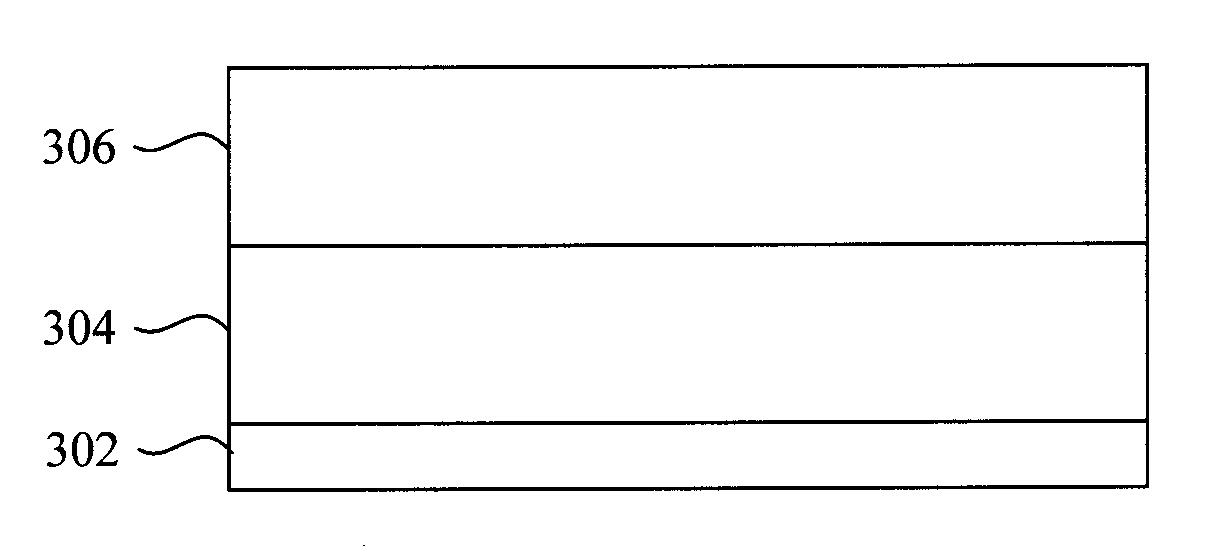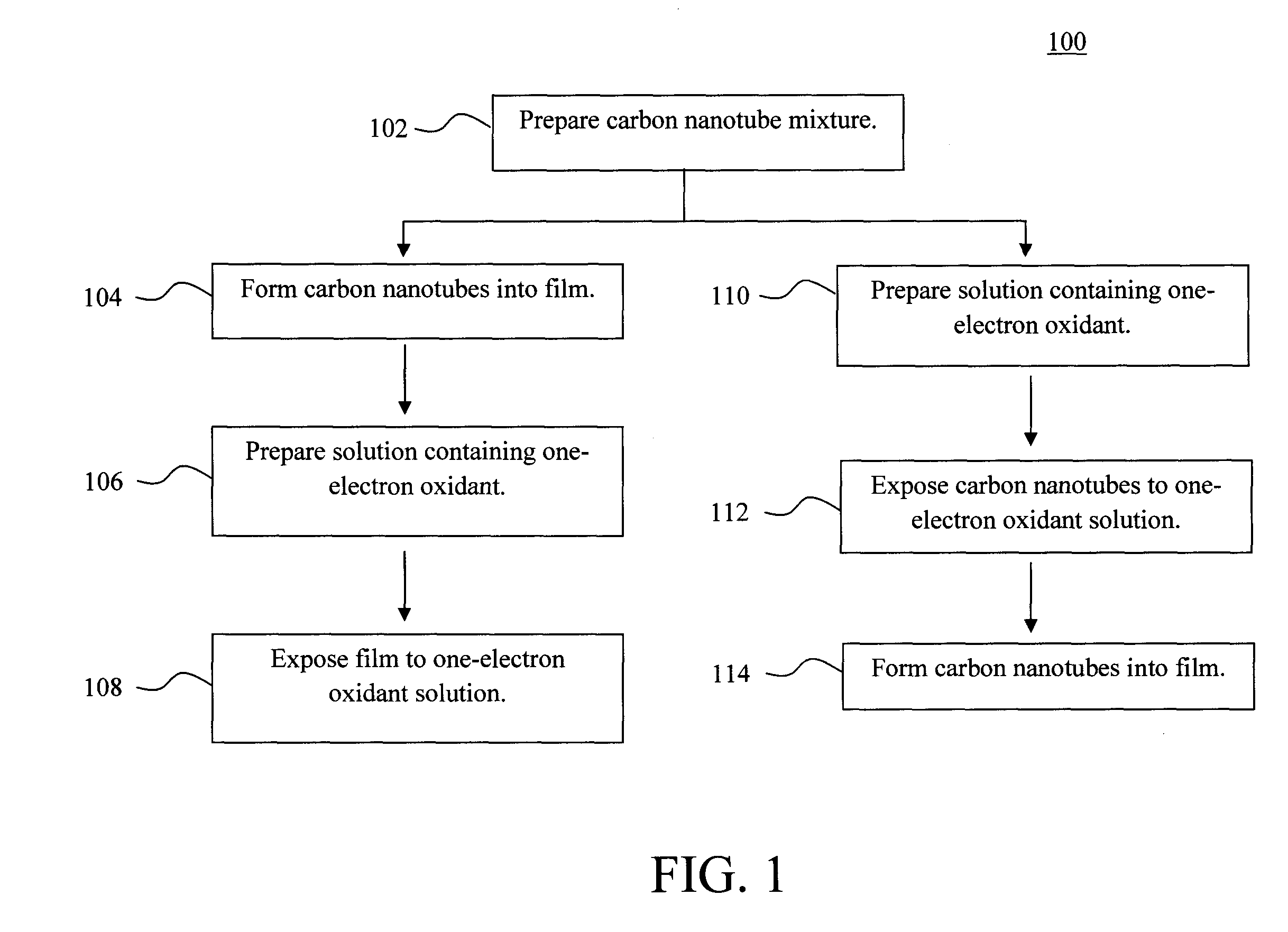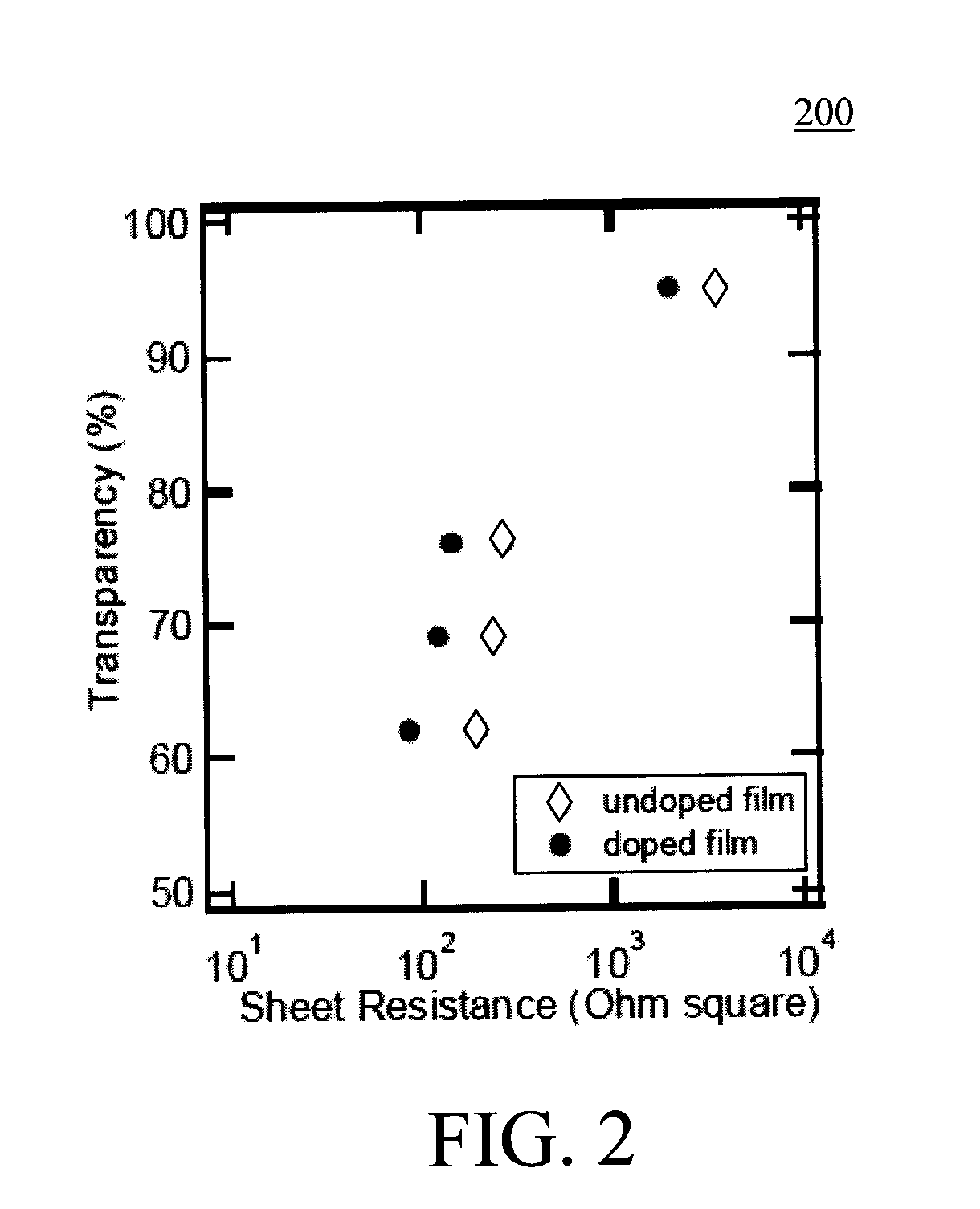Doping of Carbon Nanotube Films for the Fabrication of Transparent Electrodes
a technology of carbon nanotubes and transparent electrodes, applied in the field of carbon nanotubes, can solve the problems of incompatibility with flexible substrates, inability to manufacture ito electrodes, and expensive vacuum deposition techniques, and achieve the effects of increasing the conductivity of carbon nanotube films
- Summary
- Abstract
- Description
- Claims
- Application Information
AI Technical Summary
Benefits of technology
Problems solved by technology
Method used
Image
Examples
Embodiment Construction
[0012]FIG. 1 is a diagram illustrating exemplary methodology 100 for increasing conductivity of a carbon nanotube film. In step 102, a carbon nanotube mixture is prepared by dispersing powder carbon nanotubes in a liquid medium such as water (with a surfactant), an appropriate organic solvent(s) such as dimethylformamide (DMF), N-Methyl-2-pyrrolidone (NMP) and / or dichloroethylene (DCE) or by functionalizing the carbon nanotubes with groups that aid in dispersion and then dispersing them in, e.g., an organic solvent. The mixture can then be purified by high speed centrifugation, either with or without a step gradient.
[0013]As highlighted above, as-grown carbon nanotubes include both metallic and semiconducting carbon nanotubes. When the carbon nanotubes are used to form films, such as transparent conductive films for photovoltaic applications (see below), the presence of the semiconducting carbon nanotubes in the film can limit a minimum sheet resistance attainable. As known by those...
PUM
 Login to View More
Login to View More Abstract
Description
Claims
Application Information
 Login to View More
Login to View More - R&D Engineer
- R&D Manager
- IP Professional
- Industry Leading Data Capabilities
- Powerful AI technology
- Patent DNA Extraction
Browse by: Latest US Patents, China's latest patents, Technical Efficacy Thesaurus, Application Domain, Technology Topic, Popular Technical Reports.
© 2024 PatSnap. All rights reserved.Legal|Privacy policy|Modern Slavery Act Transparency Statement|Sitemap|About US| Contact US: help@patsnap.com










